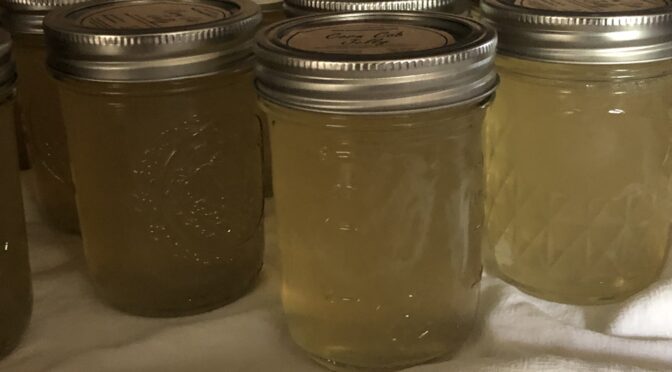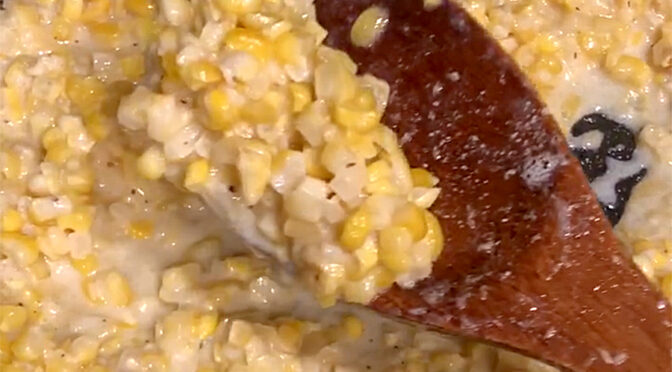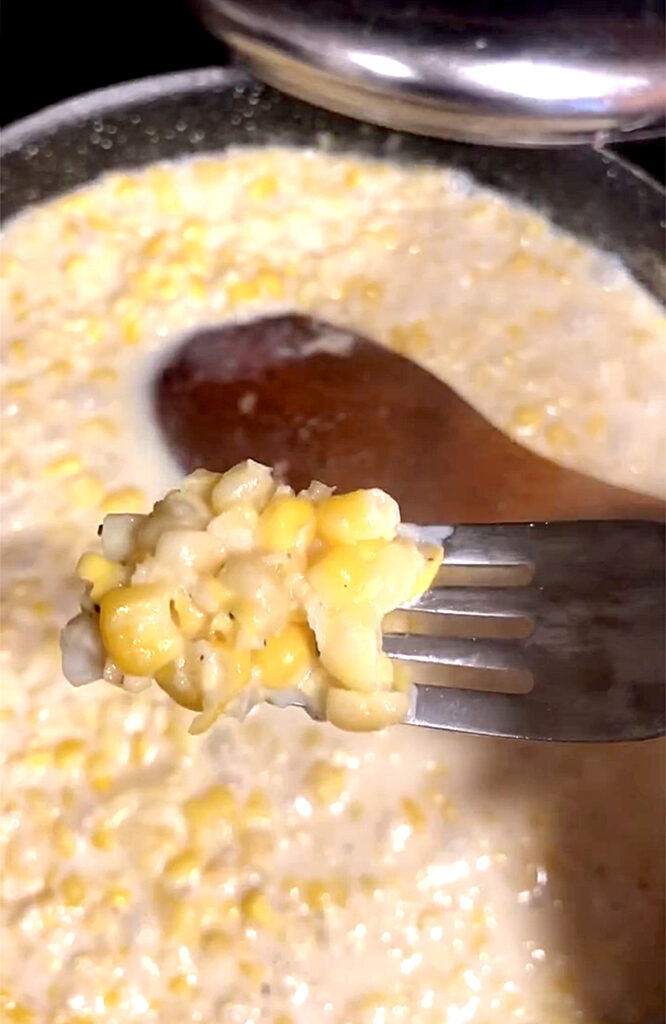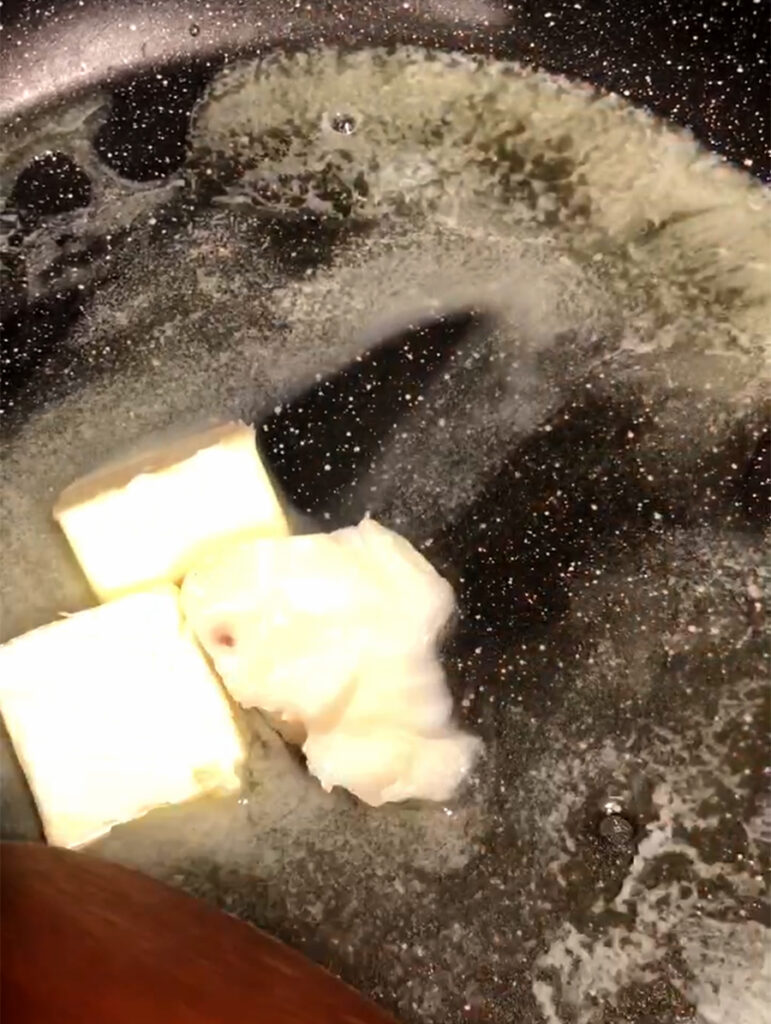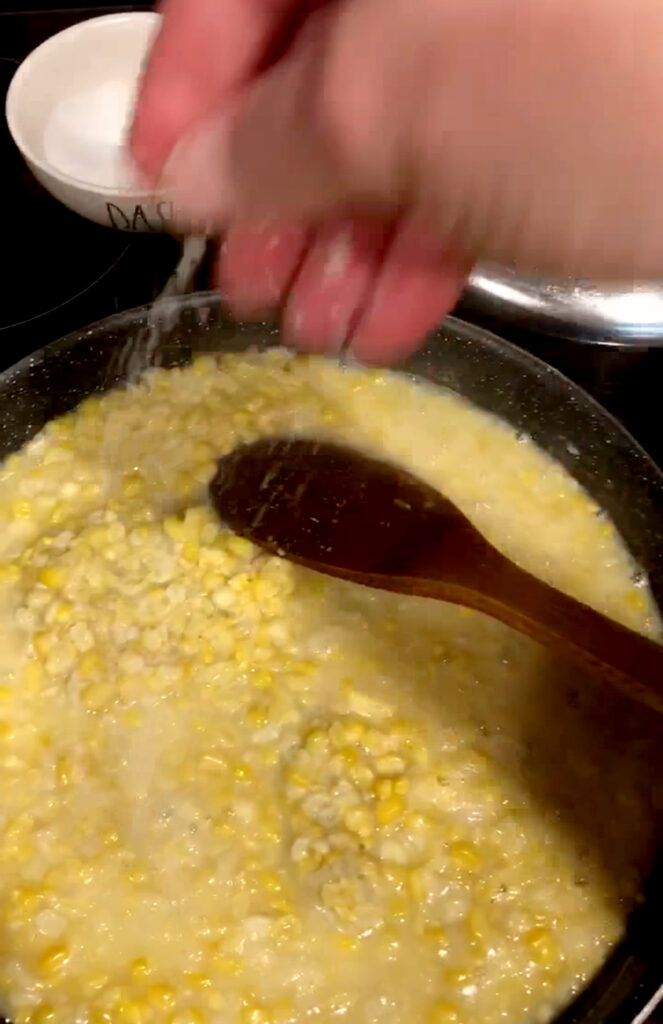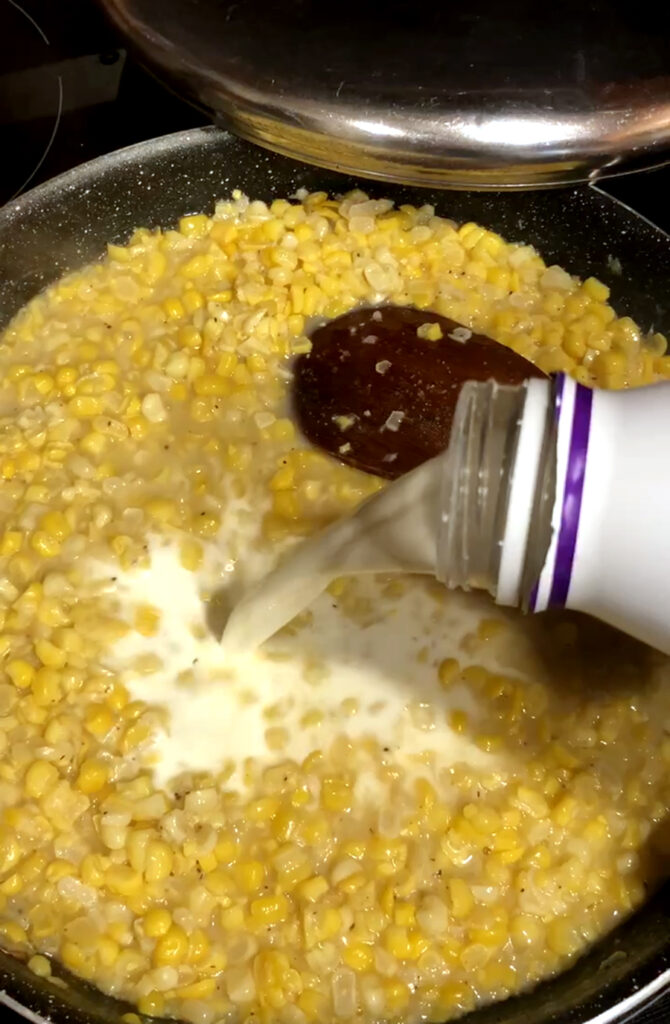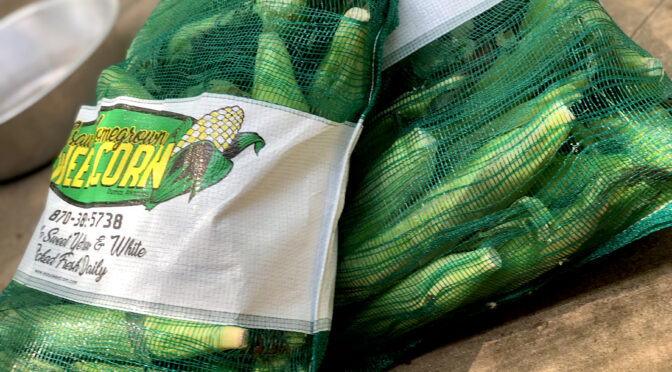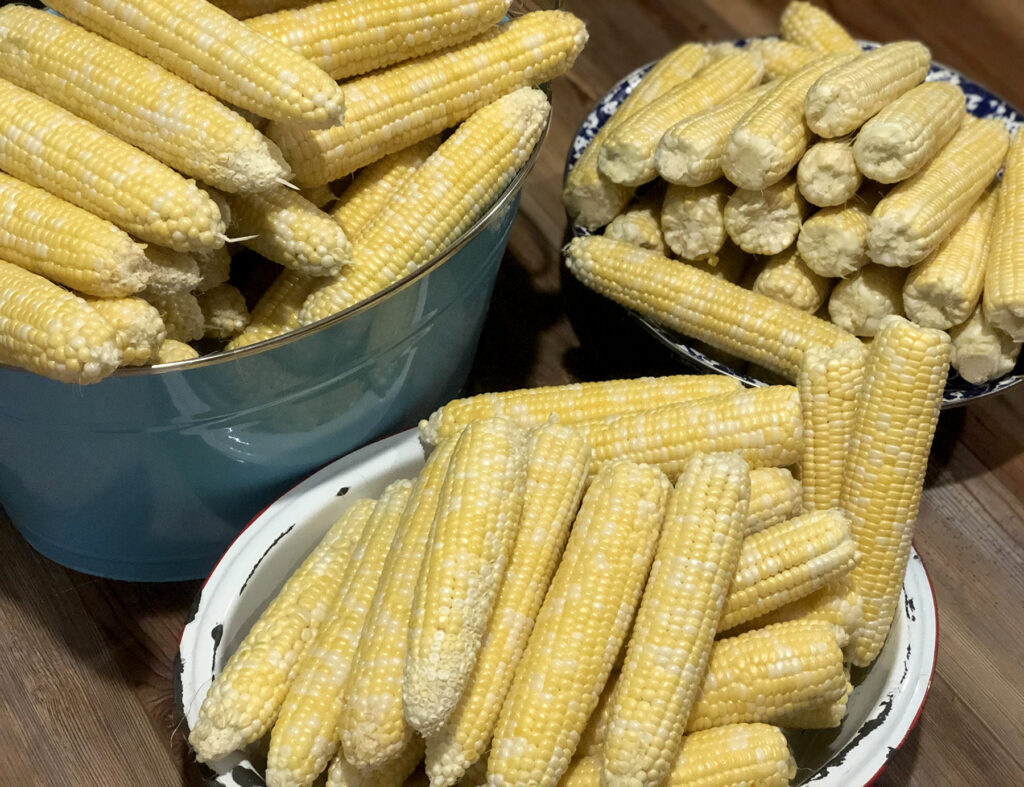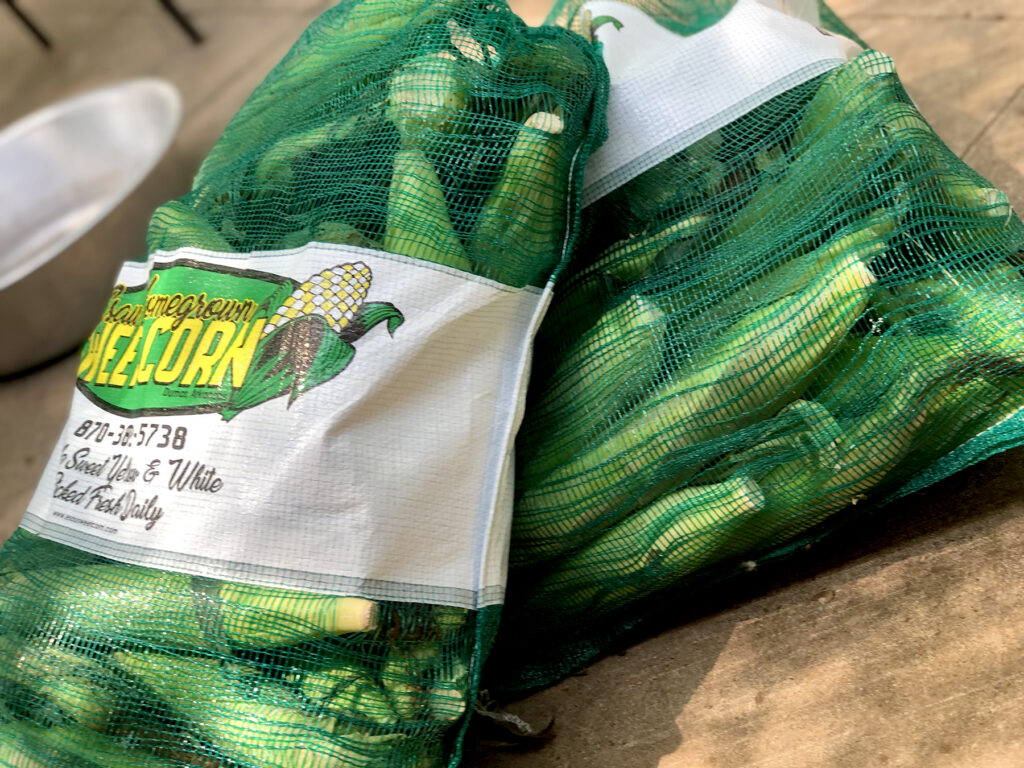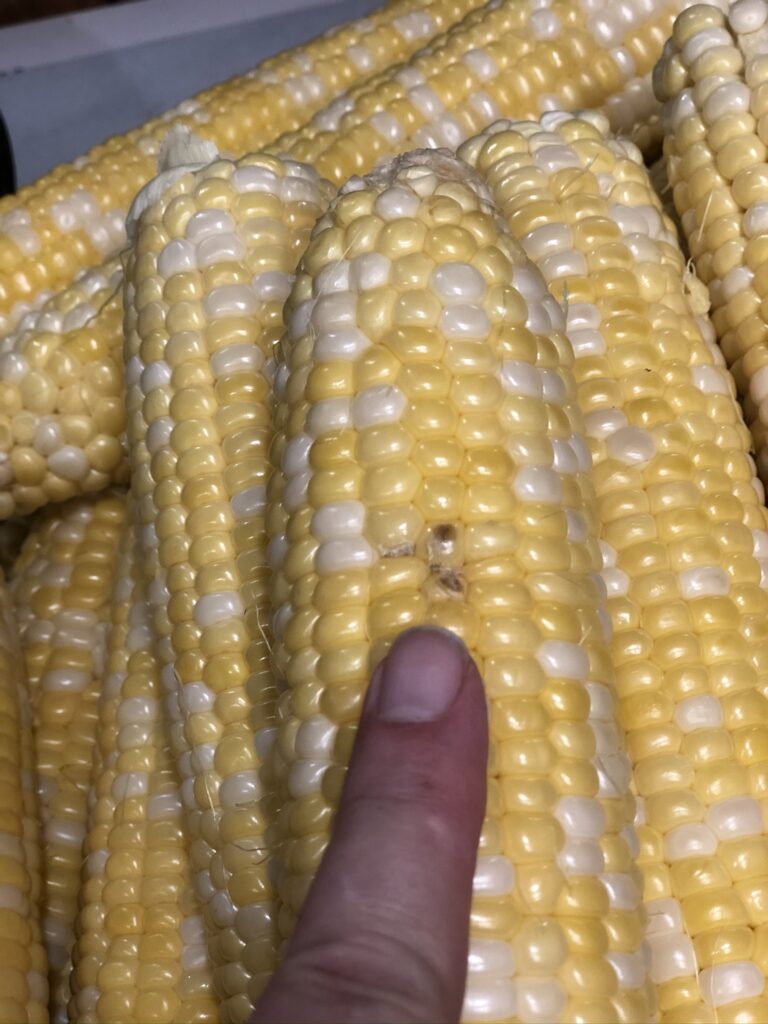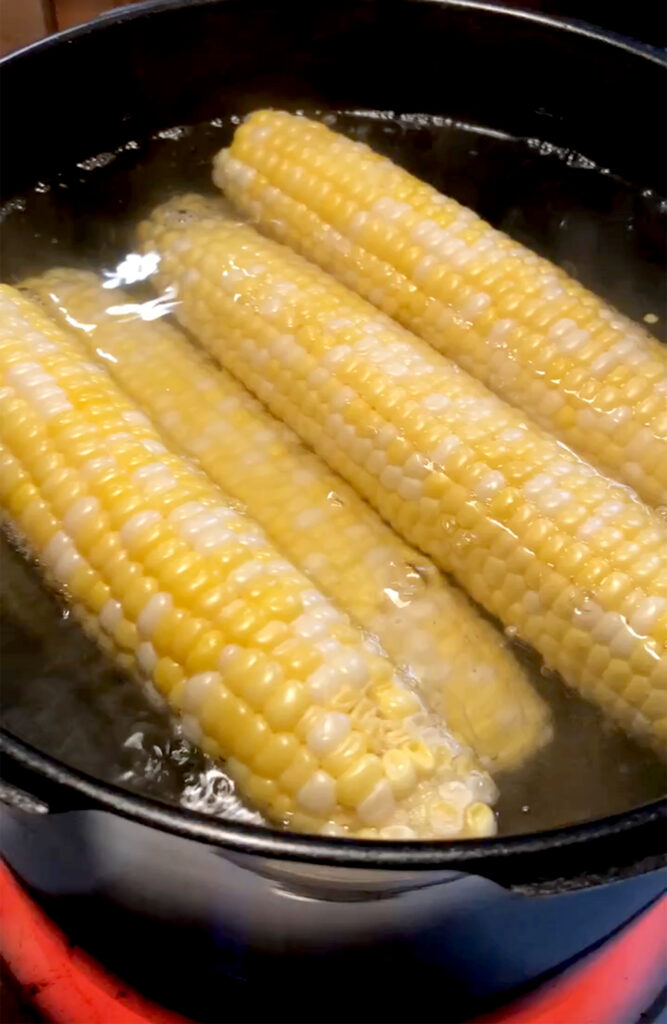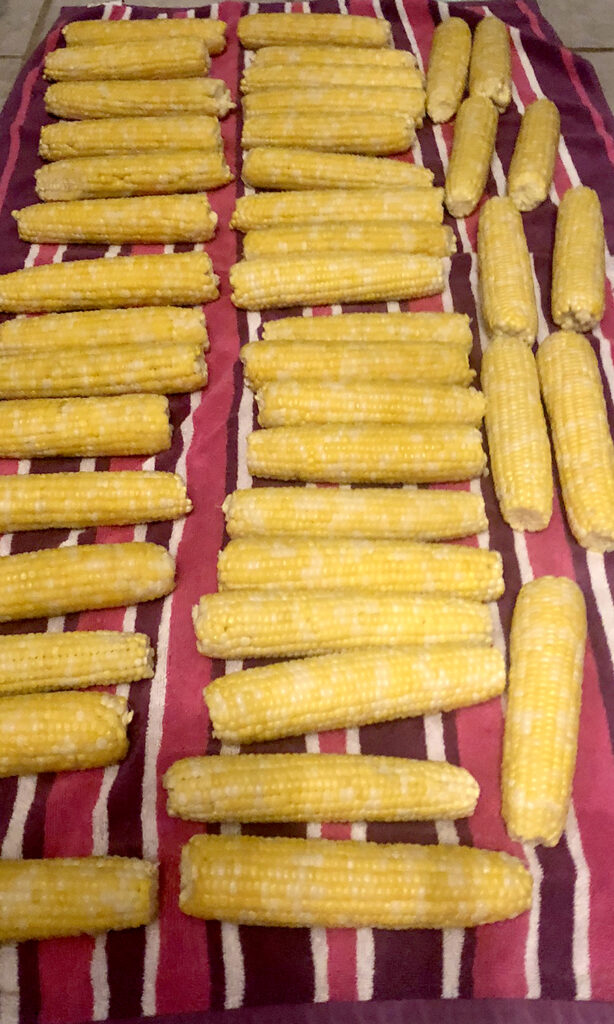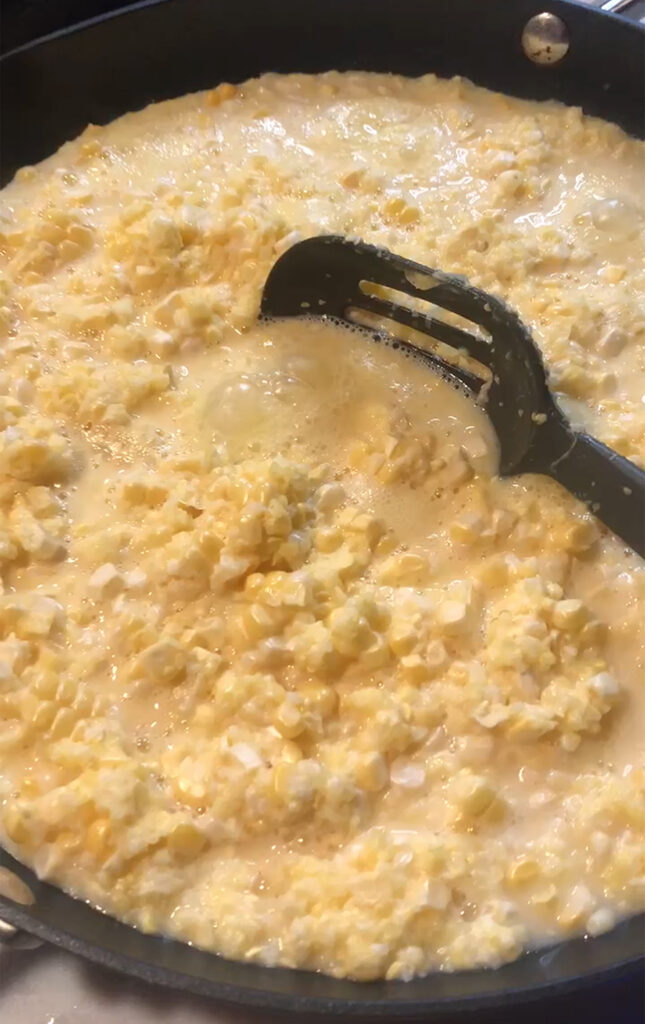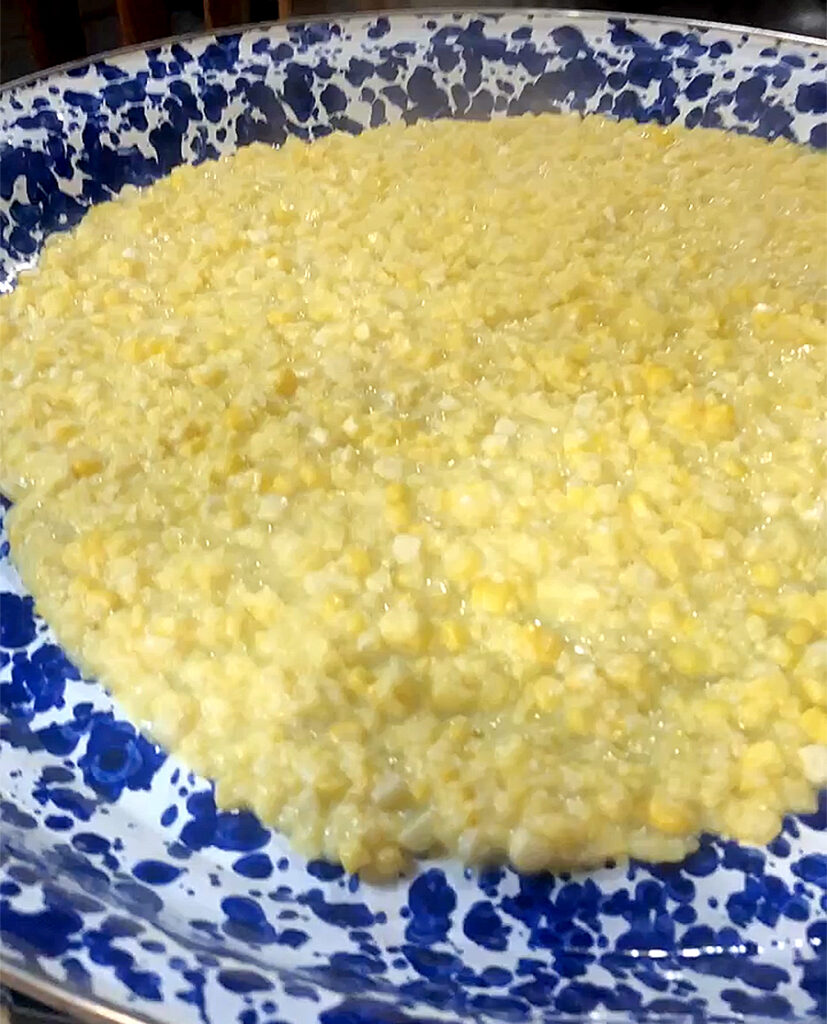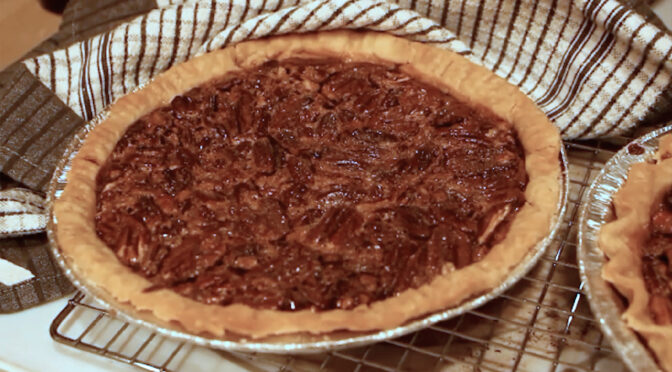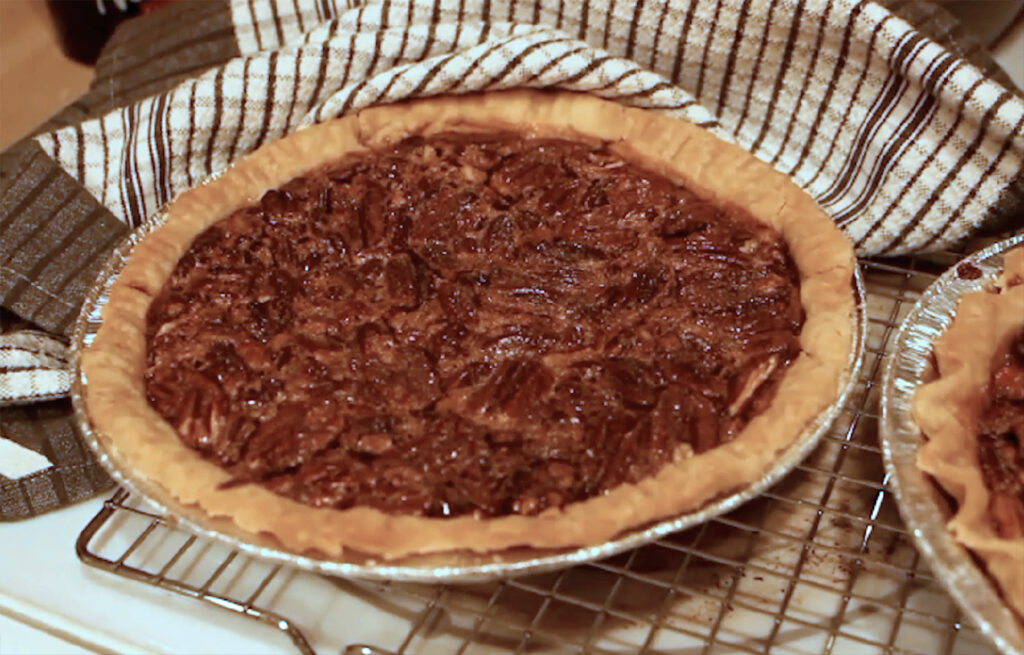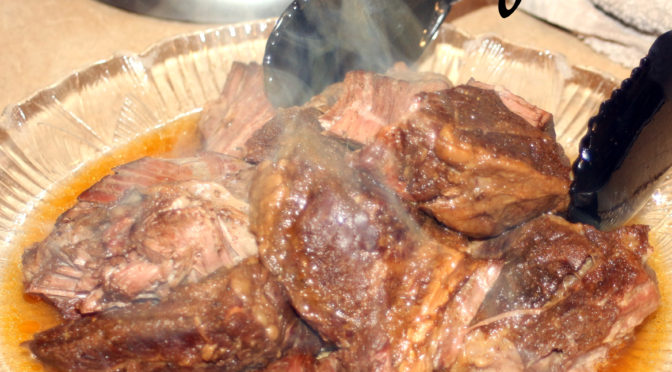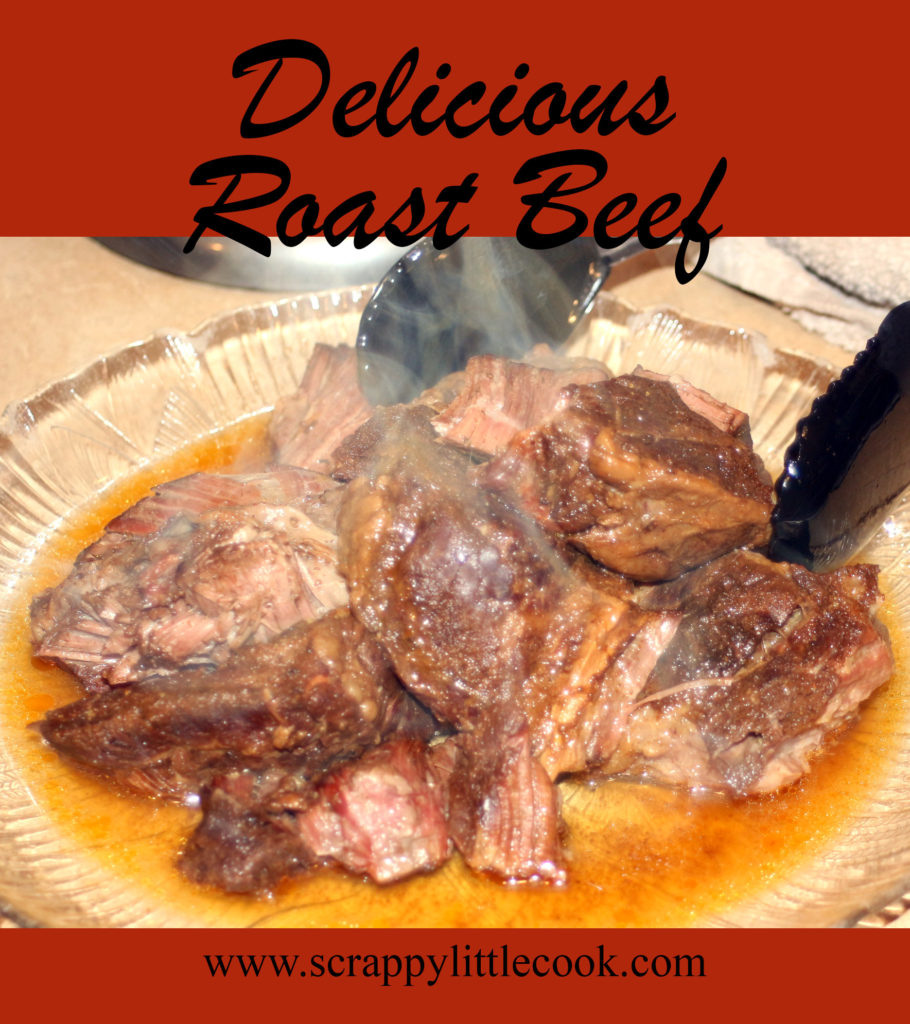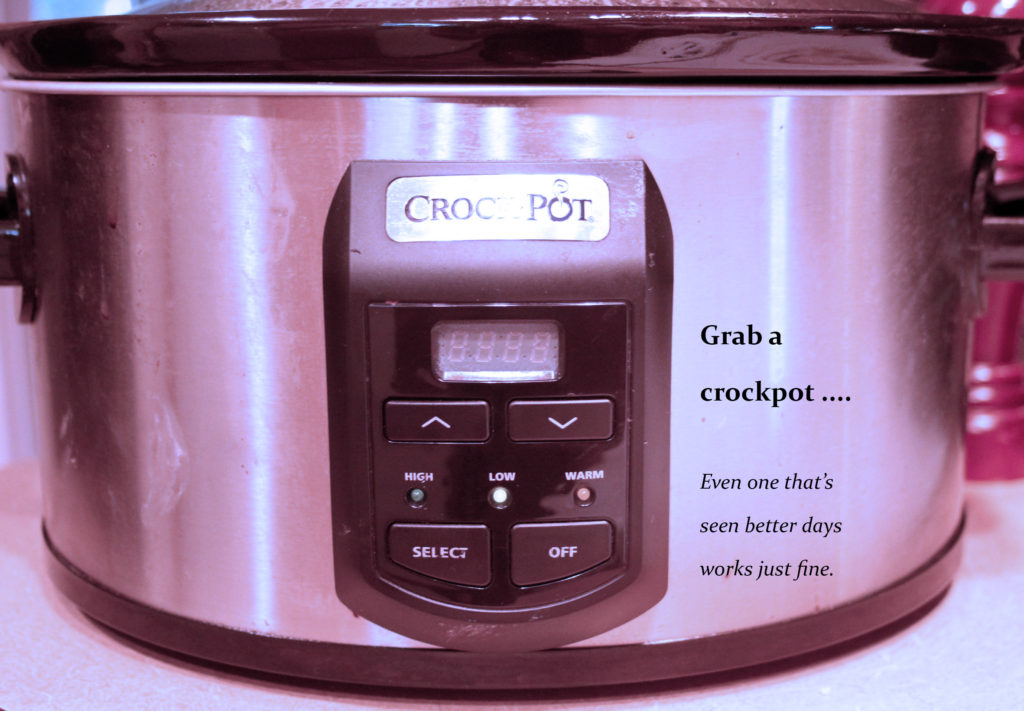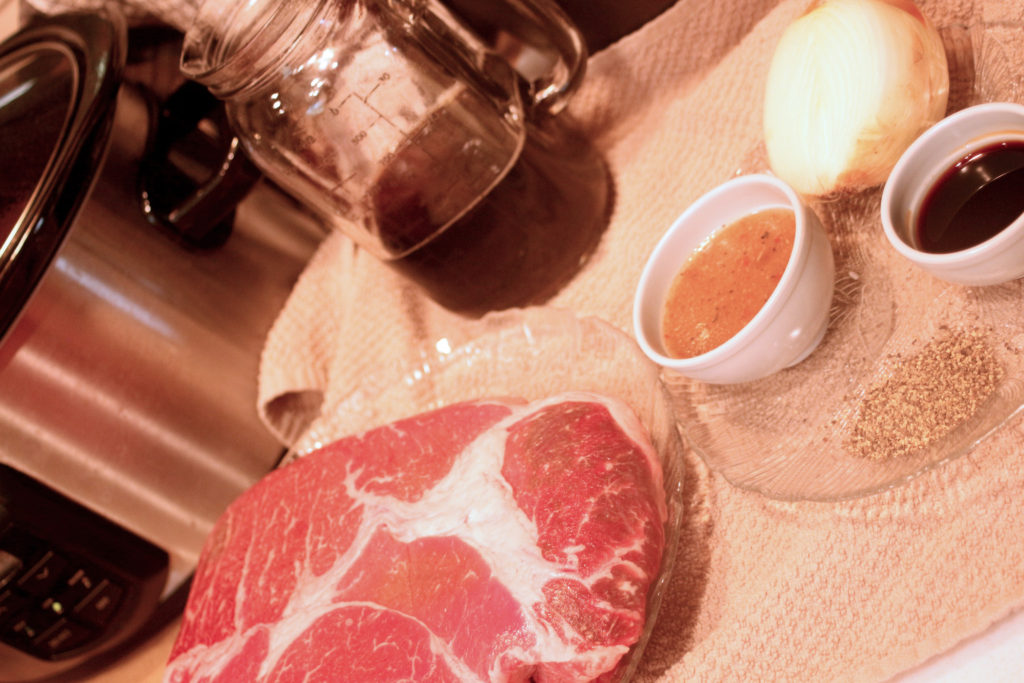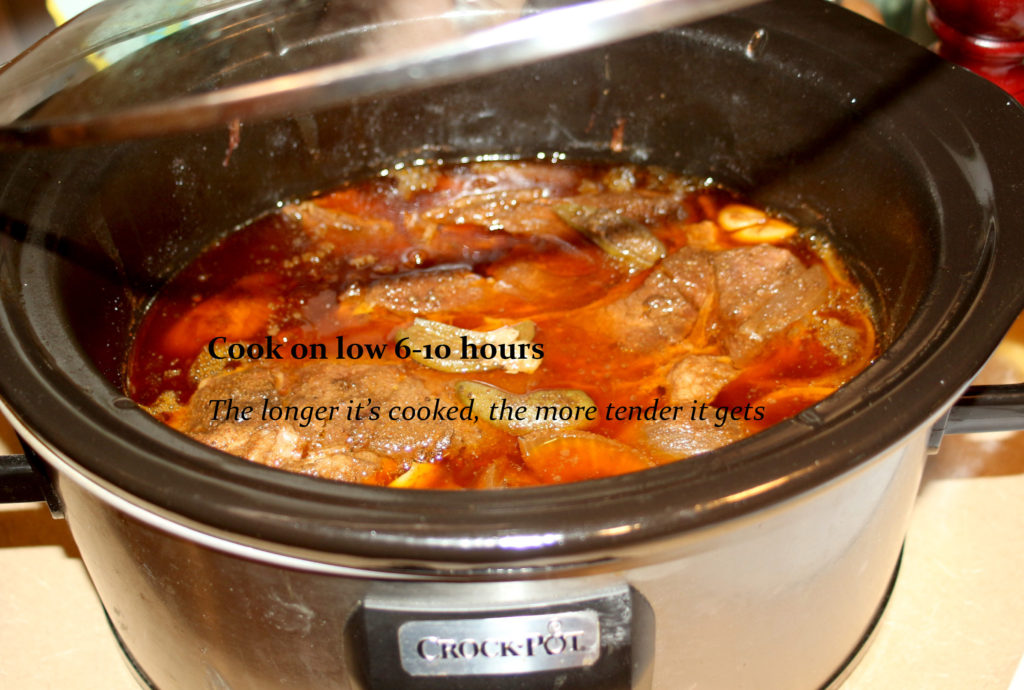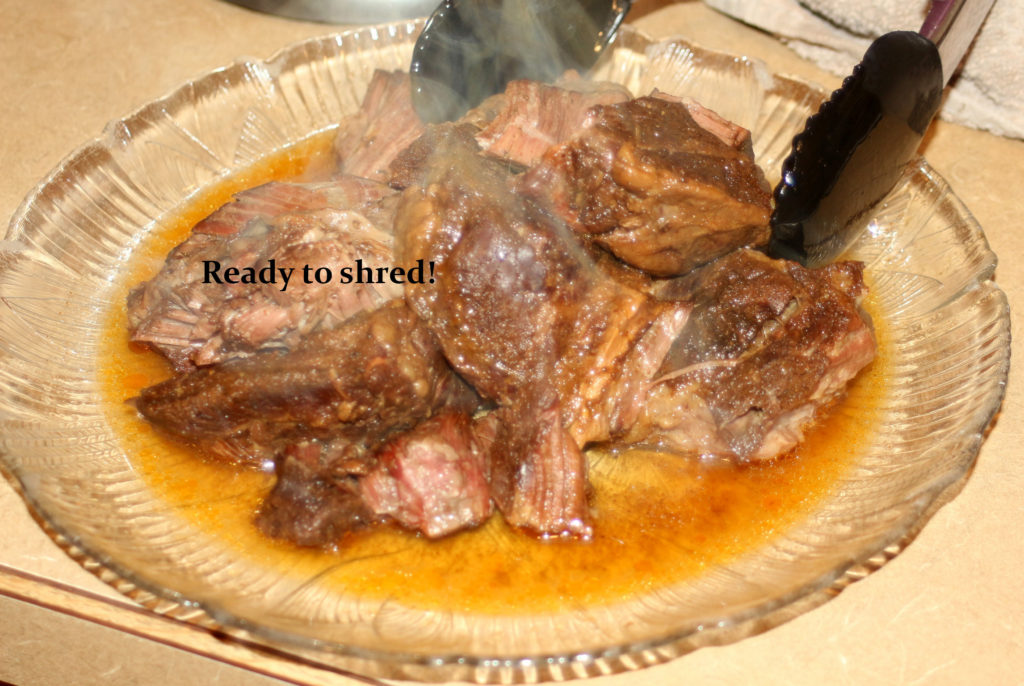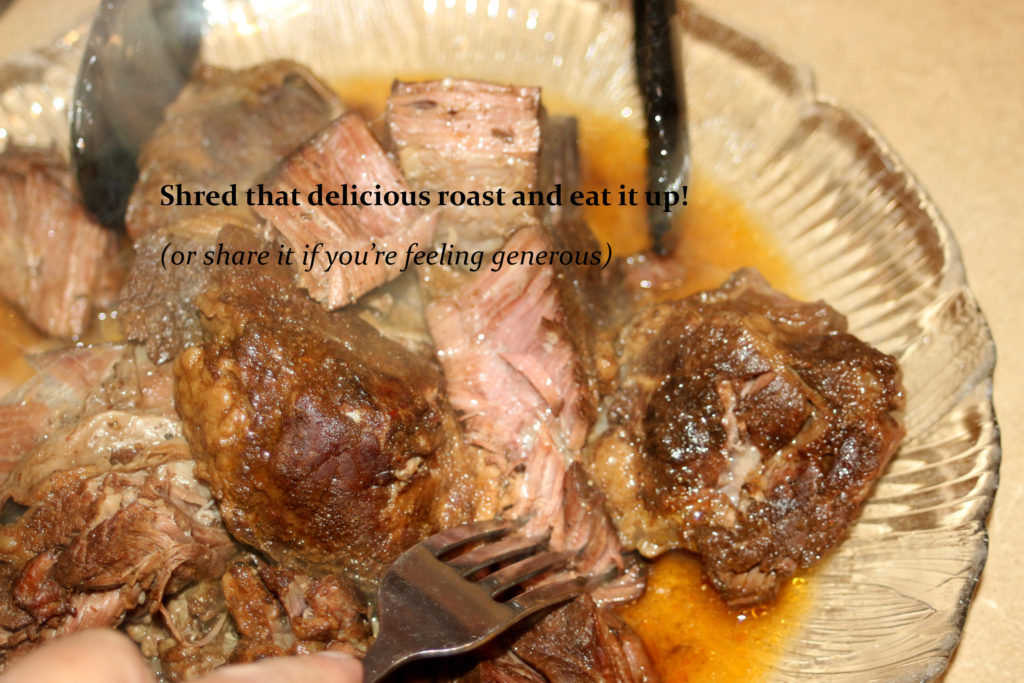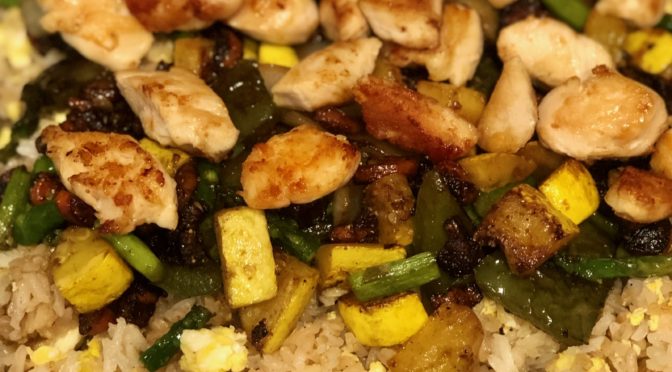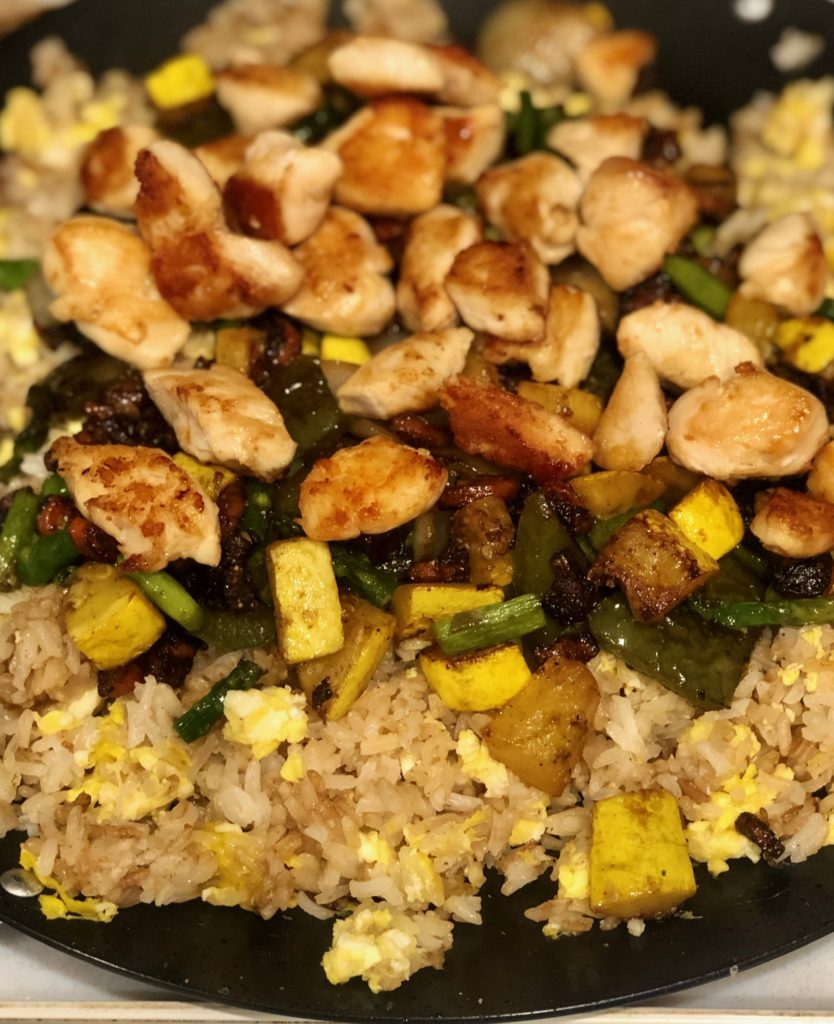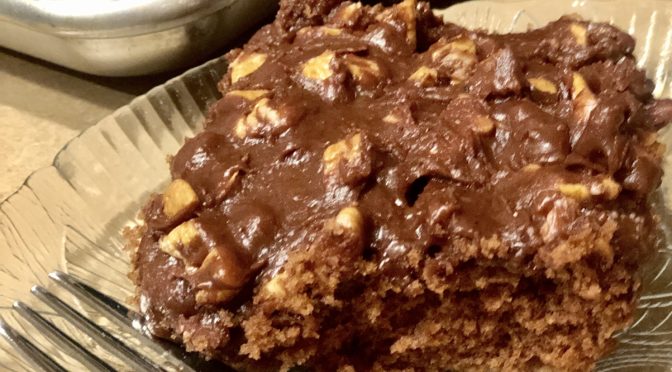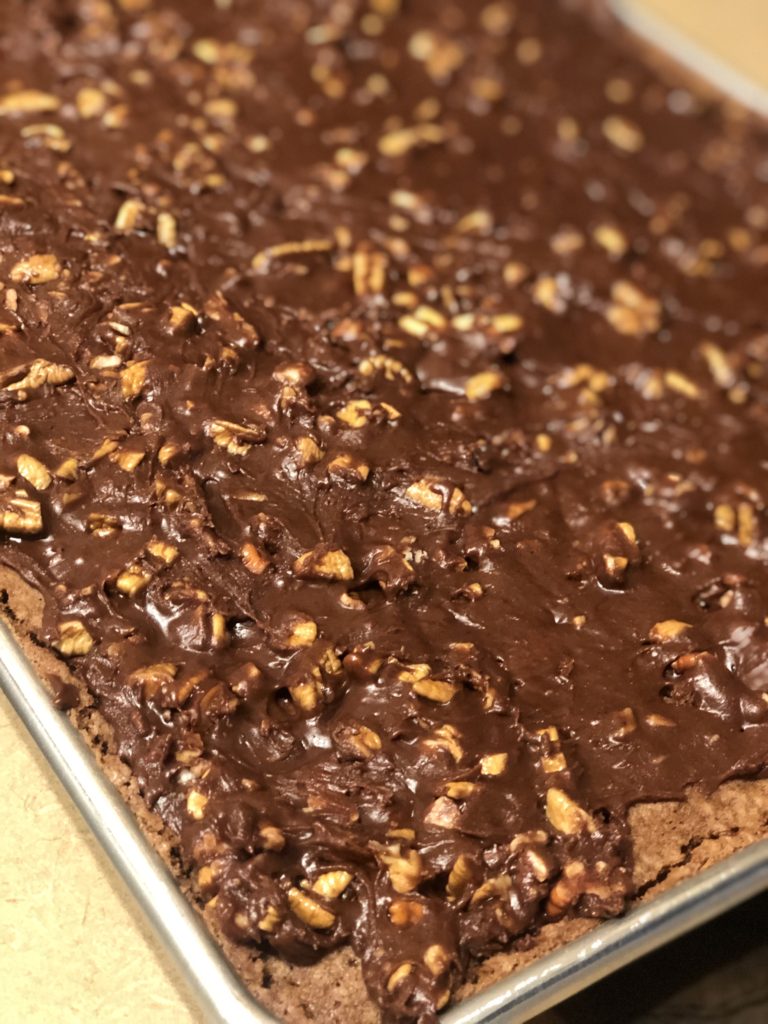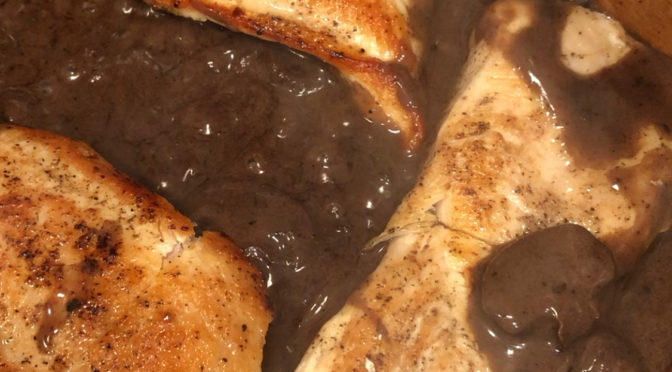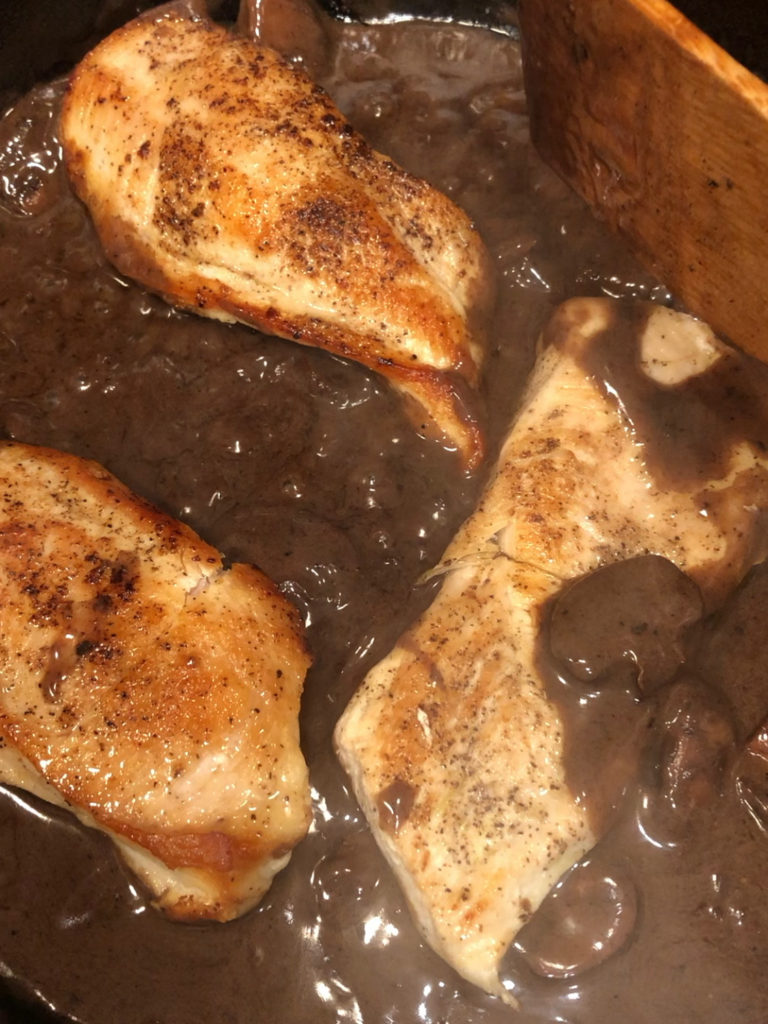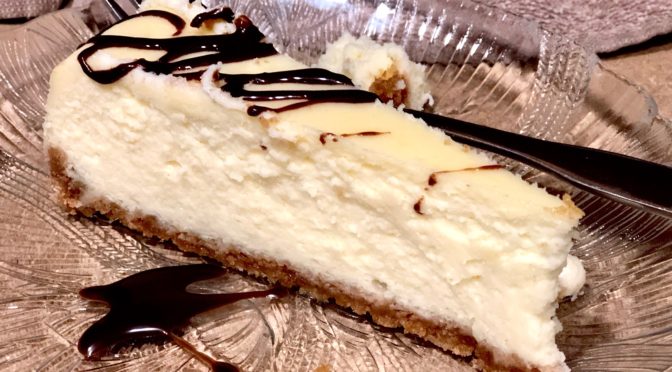Sweet uses for corn cobs
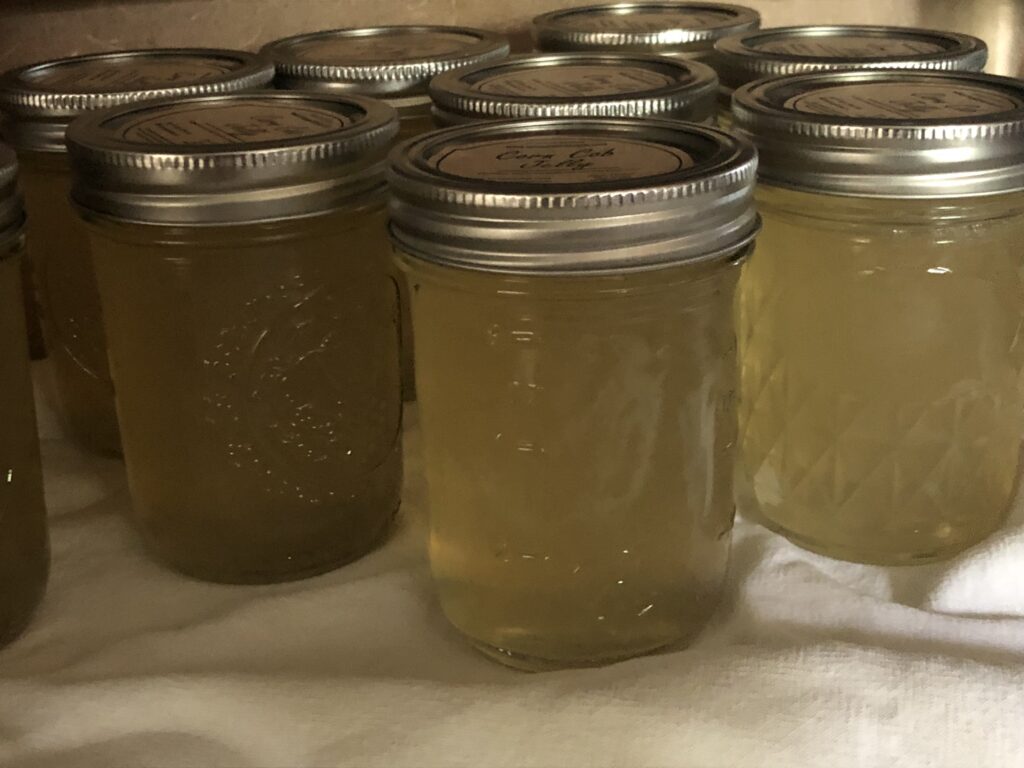
You will need:
12 corn cobs (not ones you’ve eaten off of, but ones you’ve cut the kernels from for cream corn)
2 qt water (enough to cover the corn cobs)
Place corn cobs in large pot of water over medium heat.
Make sure water just covers corn cobs.
Boil for 10-15 min to release whatever milk and sugar is left.
Strain that liquid through fine mesh strainer or cheese cloth.
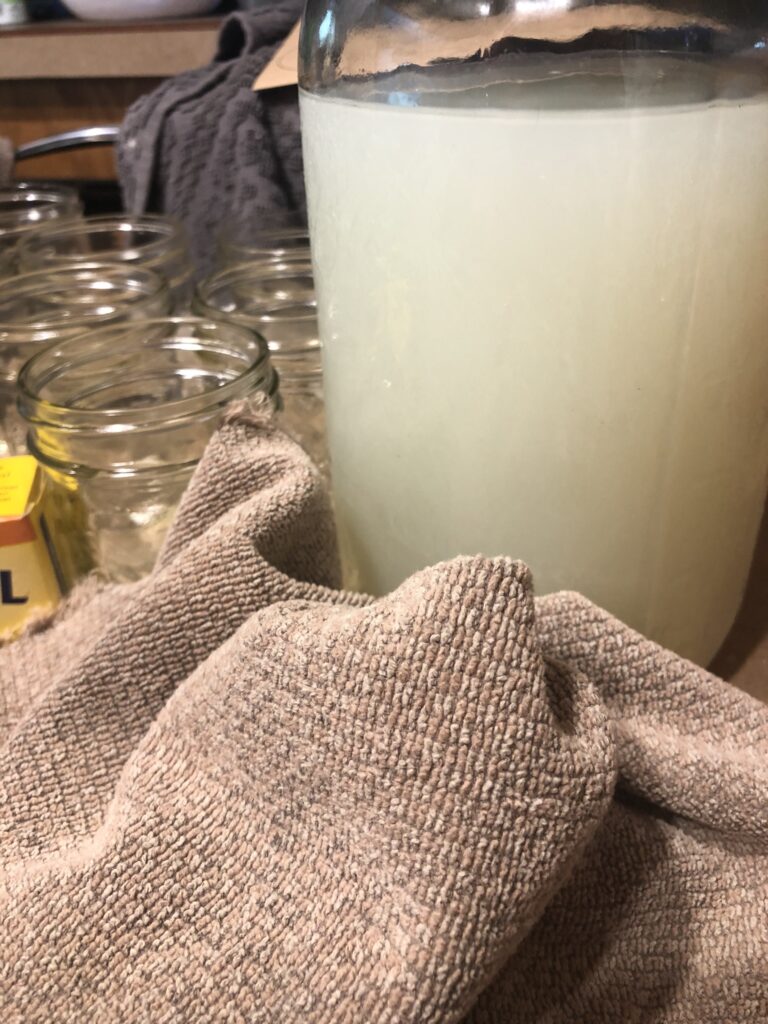
3 cups liquid
(If you have more than 3 cups liquid, freeze in cup portions and add to soups instead of chicken broth. It gives a great flavor. If you don’t have quite 3 cups, add a little water.)
3 cups sugar
1 box pectin (Sure-Jell)
Fill one large heavy bottom pot with water and place on stove over medium high heat.
Put corn liquid in another large heavy bottom pot and place on stove over medium high heat.
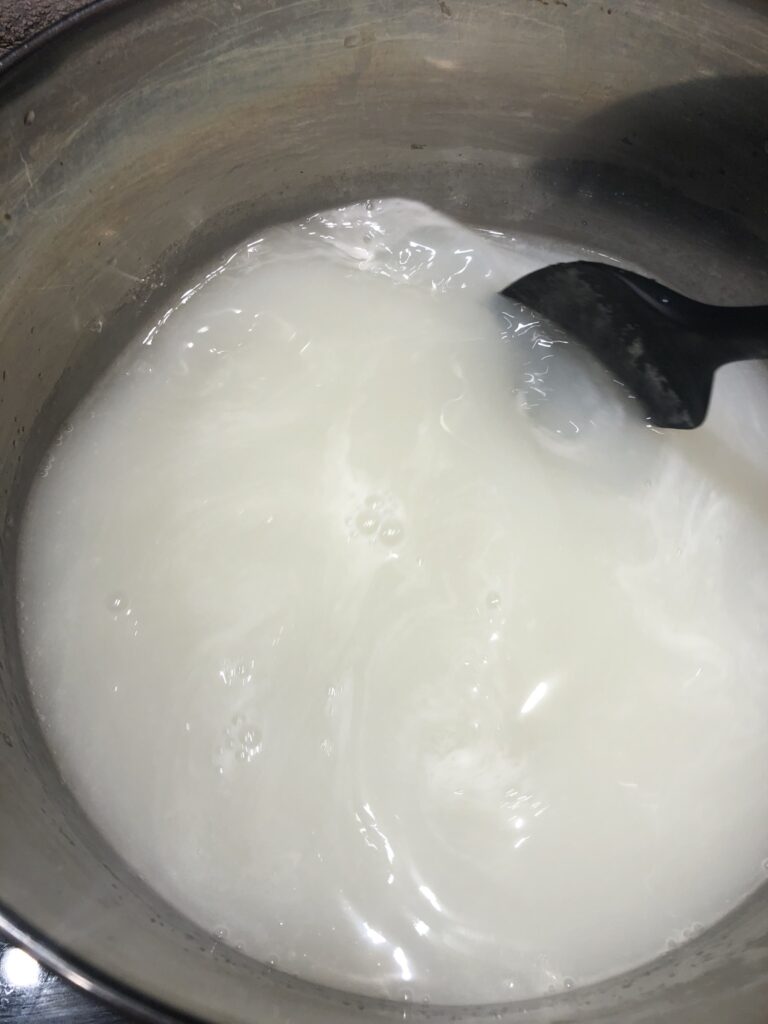
Stir pectin into corn liquid. Allow to heat, stirring occasionally.
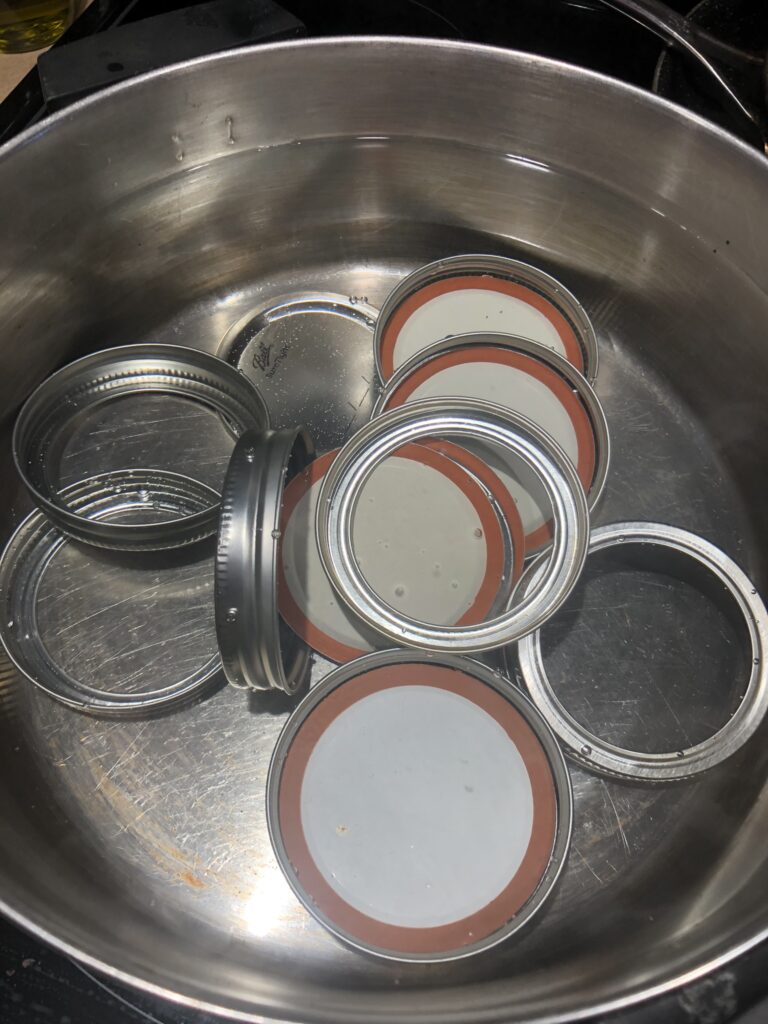
In the water pot, put your jar lids. Boil these so they are sanitized and hot which aids in sealing.
Have jars clean and ready. I don’t have them hot as the jelly heats the jar and the lid is heated.
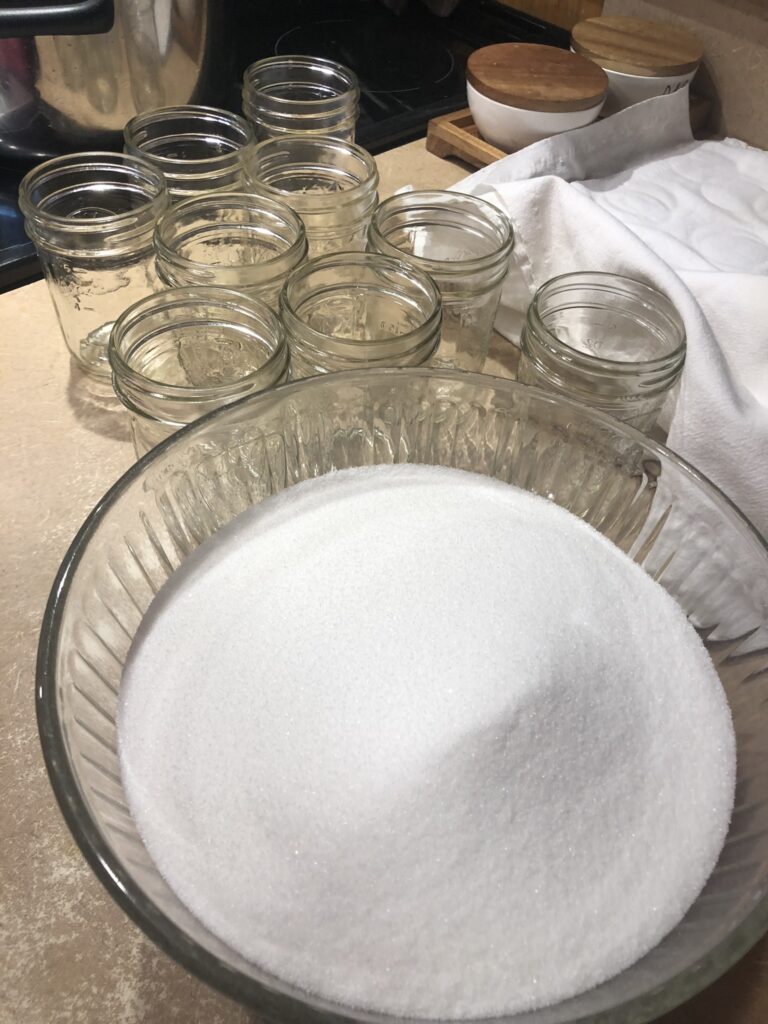
Have a bowl ready with 3 cups sugar measured out.
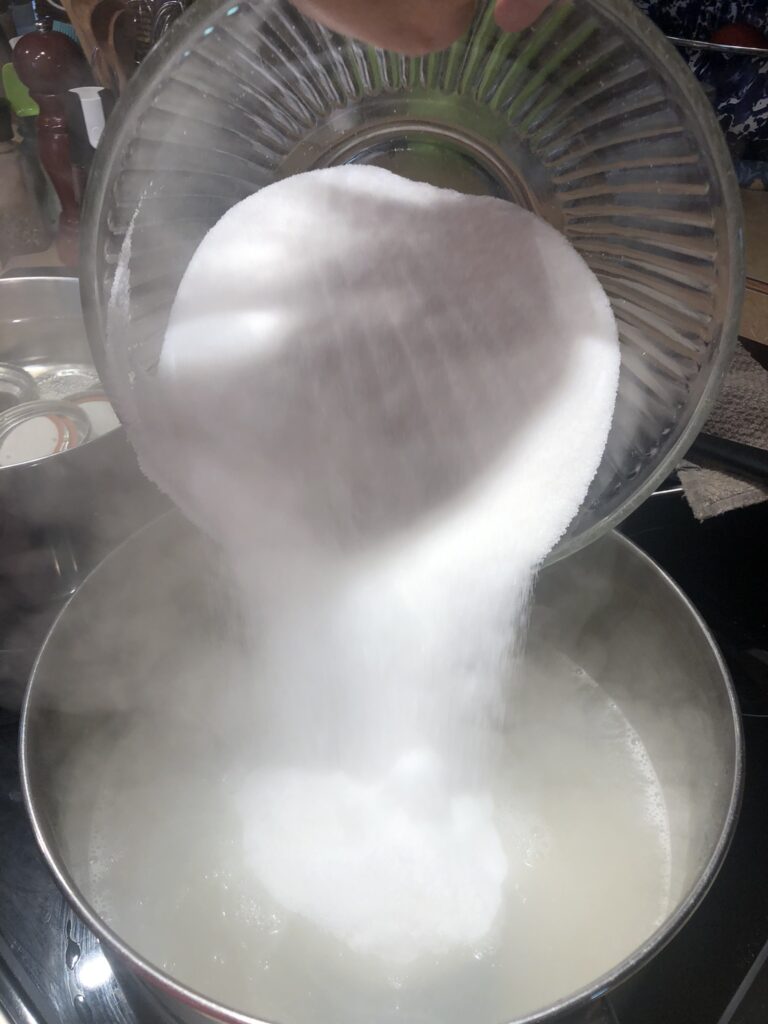
When corn liquid comes to boil, stir in sugar. Stir this frequently as the sugar can cause the mixture to scorch.
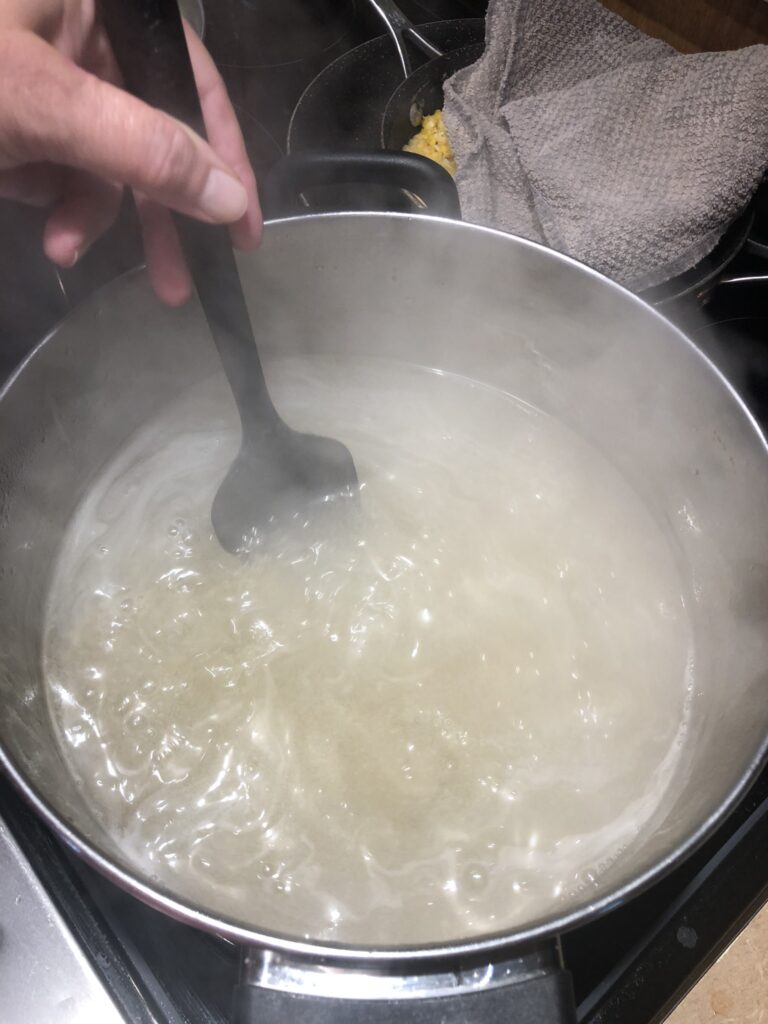
When it comes to rolling boil (a boil that doesn’t stop when you stir), stir constantly for 5 minutes.
Remove from heat and stir to get foam absorbed back into mixture. If it doesn’t all absorb, you can skim it off now or when you put into jars.
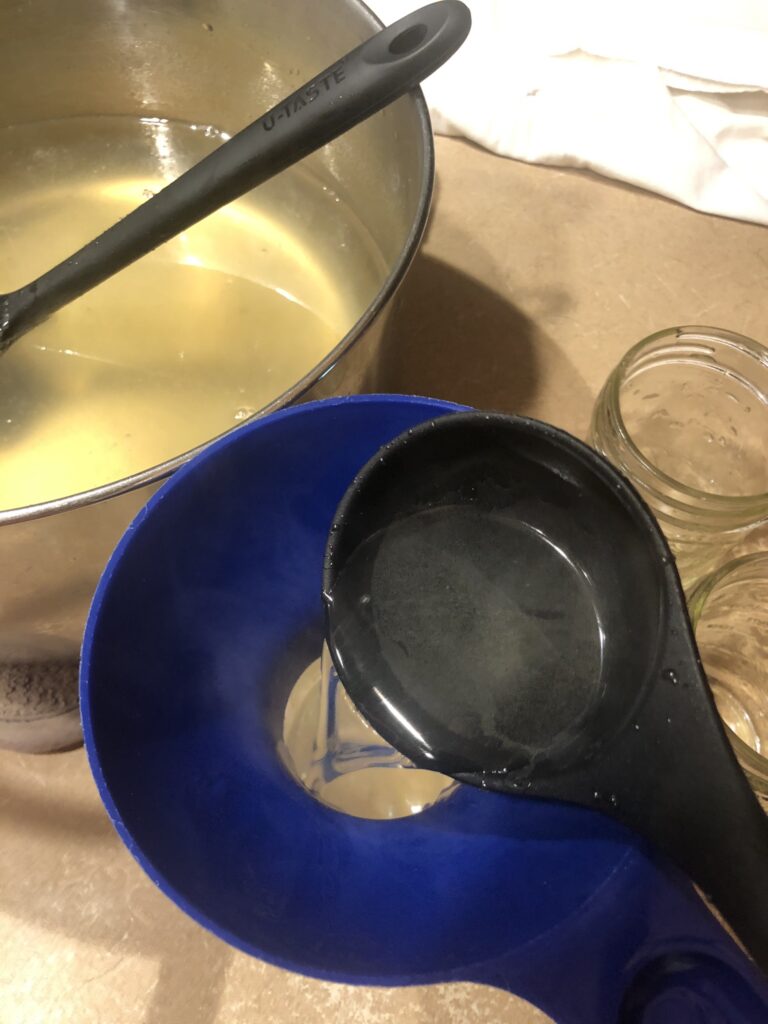
Ladle liquid into jars. If foam is there, skim off.
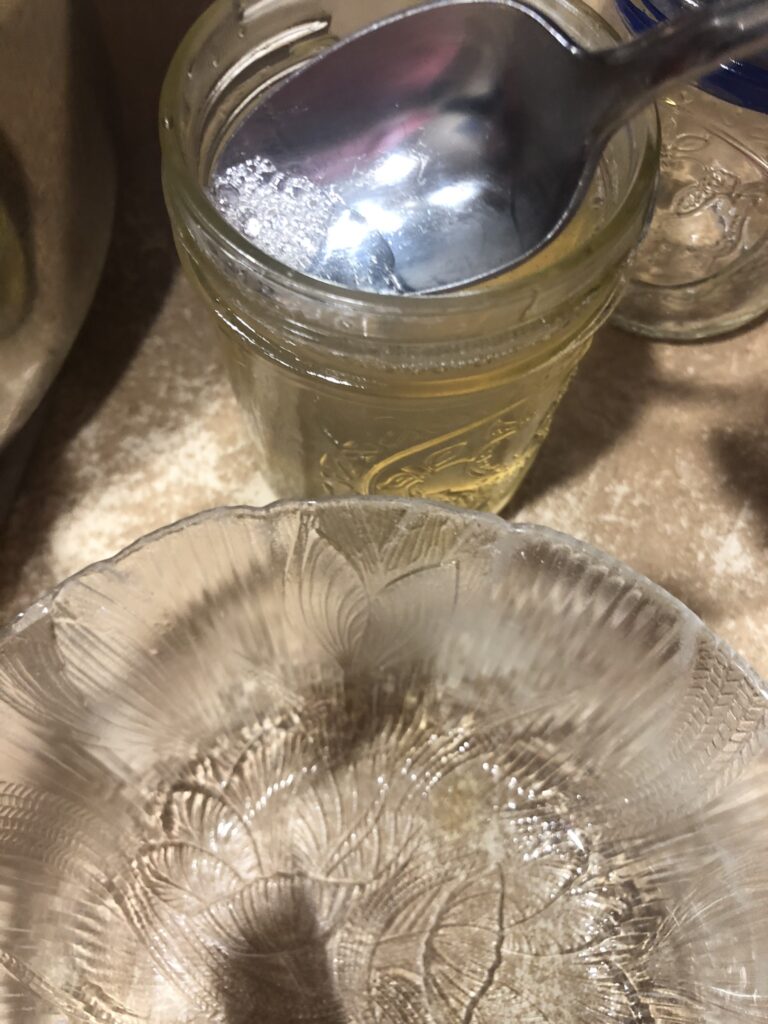
Wipe jar tops with hot towel to remove any liquid as this can affect sealing or not allow the jar to open easily due to jelly cementing the two surfaces together.
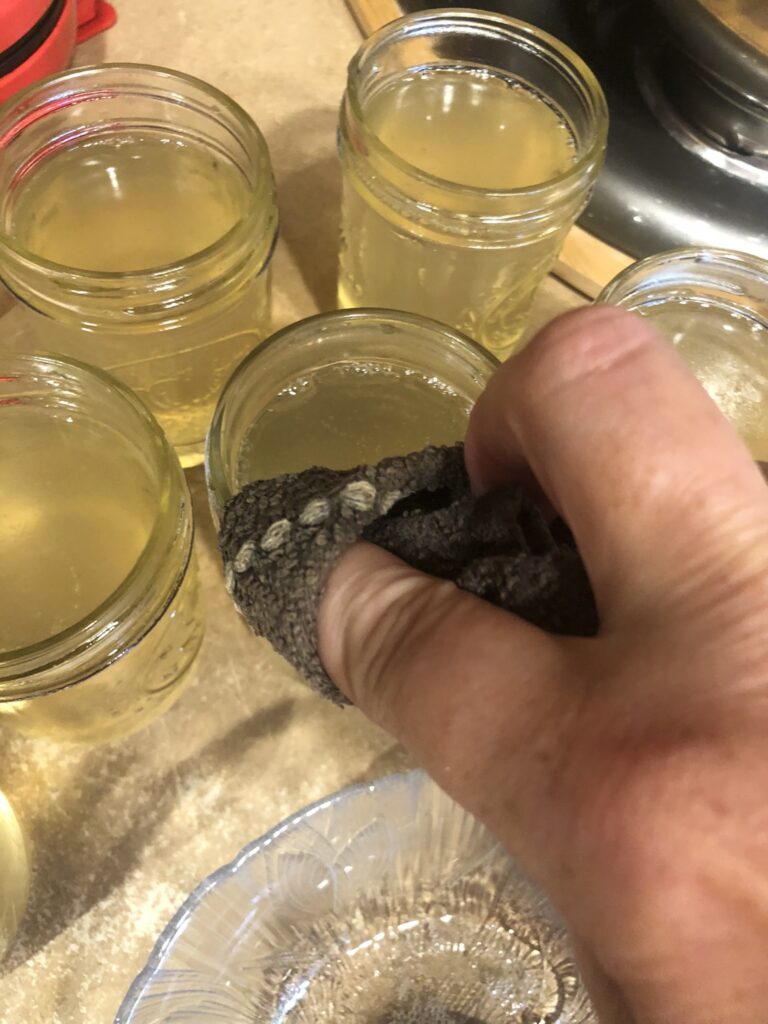
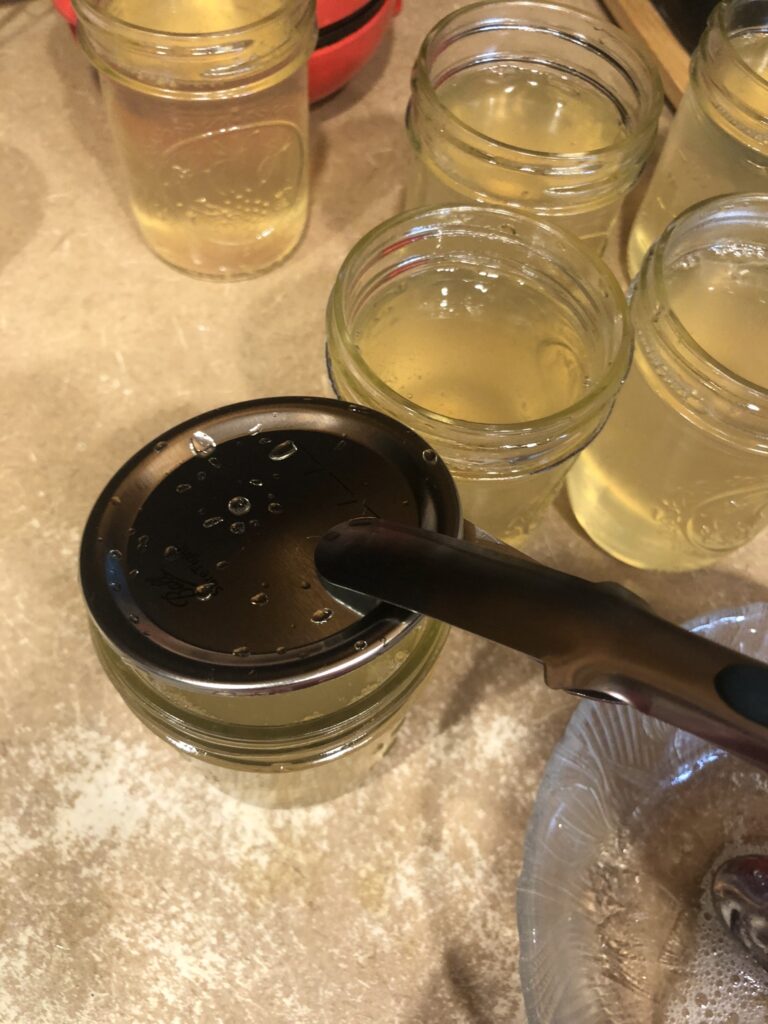
Place hot lids on jars. Screw bands on finger tight (don’t crank down on it).
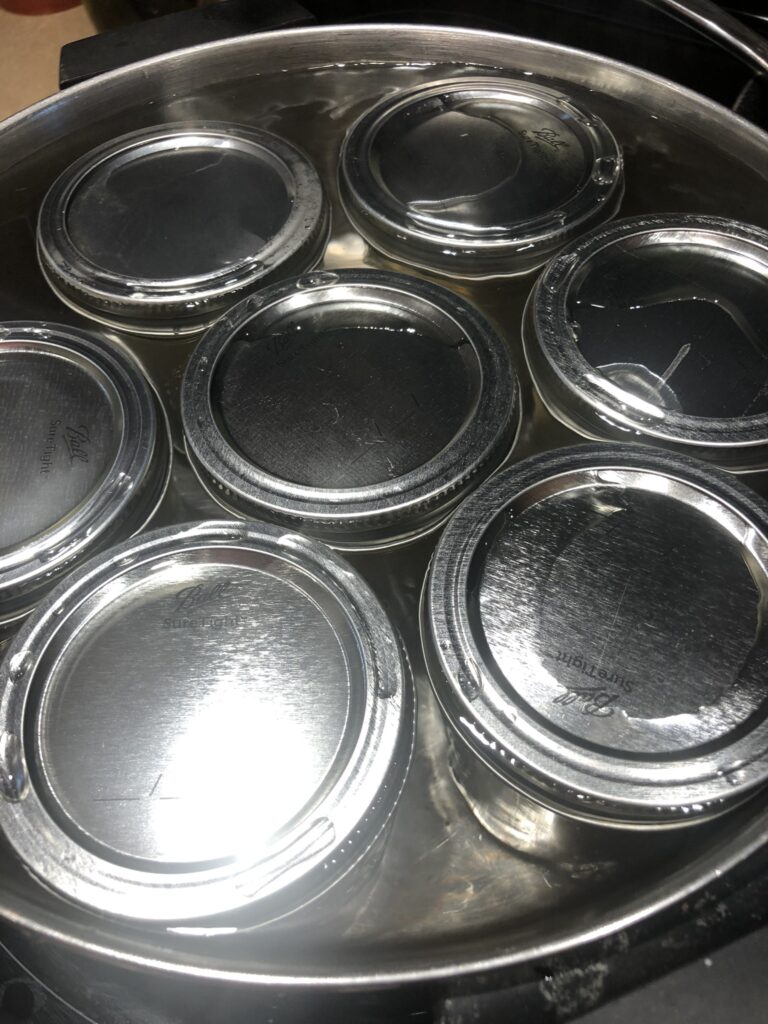
In the large pot the lids were pulled from, place your jars into that water and make sure water is to top of jars or ideally covering them slightly.
Water bath on medium high heat for 15 minutes. (When the water begins a gentle boil, time 15 minutes.)
Remove from water and place on towel on counter top. Top with another towel to keep heat in and this aids in sealing.
The story:
My parents were raised by parents who’d been through the Great Depression. And they were raised like they were in one because for a lot of folks in the South and elsewhere, the Depression did not end in 1939. Hard times were felt much later. So they were taught to never waste anything. In keeping with that mentality, I give you corn cob jelly. Now, my foremothers did not make this, and I am surprised that they didn’t. It could be because the corn cobs they discarded were put to use for better things … like corn cob fights.
Picture a snowball fight, but with rough corn cobs. My Dad Charles has told me about this particular brand of “fun”. The goal was to wallop one another with them around the head and back as this seemed to pack the most punch. You’d seek out corn cobs that had been given to the cows as these were then soaked in rain … and cow urine. This made them particularly hard and gross. If you could find one slathered in cow pie (manure), that was even better.
He remembers vividly a particular battle in a field strewn with cow patties with a neighbor boy when he was about 10. They were walking together home from school and decided they needed to have a little fun. As they hurtled these homegrown missiles at one another, the competition grew. This friend had found the best, stinkiest corn cob and launched it right between my Dad’s shoulder blades as he ran. It knocked him flat on his face right next to a pretty freshly laid cow pie. He looked back to see this friend doubled over laughing. So he grabbed a big handful of that manure and ran towards his friend who was still laughing and so didn’t see Dad coming until he was within reach. He turned to run and as he did, Dad smashed that manure onto the side of his head. Yes, it did go into his ear and all into his hair and down his neck. I asked Dad if they got in a real fight then. He said no, they just walked together up to his house and my grandmother Lorene dug the manure out of his friend’s ear, cleaned him up, and sent him on home.
No grudge was held. No self pity or lashing out at everyone because you got hit with a corn cob or had manure spread onto you. And parents didn’t intervene unless it was extremely serious. Kids learned to handle themselves, be tough, be fair, be beat at something. They learned to run fast, aim well, and dodge better. All valuable life lessons.
Personally, I prefer to use corn cobs for sweeter purposes so I give you my recipe for corn cob jelly.

